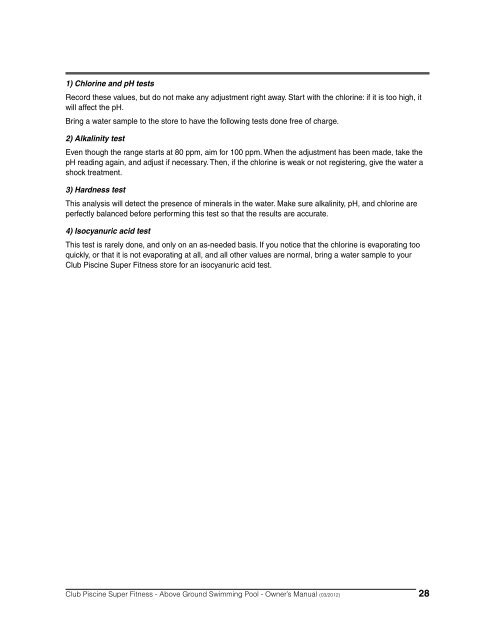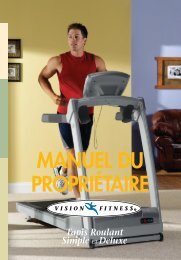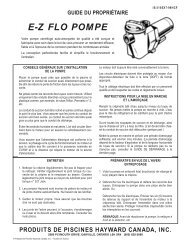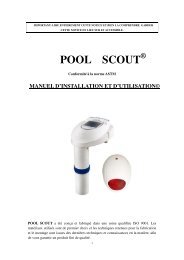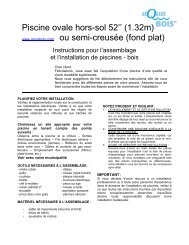Download the above ground pool manual - Club Piscine
Download the above ground pool manual - Club Piscine
Download the above ground pool manual - Club Piscine
Create successful ePaper yourself
Turn your PDF publications into a flip-book with our unique Google optimized e-Paper software.
1) Chlorine and pH tests<br />
Record <strong>the</strong>se values, but do not make any adjustment right away. Start with <strong>the</strong> chlorine: if it is too high, it<br />
will affect <strong>the</strong> pH.<br />
Bring a water sample to <strong>the</strong> store to have <strong>the</strong> following tests done free of charge.<br />
2) Alkalinity test<br />
Even though <strong>the</strong> range starts at 80 ppm, aim for 100 ppm. When <strong>the</strong> adjustment has been made, take <strong>the</strong><br />
pH reading again, and adjust if necessary. Then, if <strong>the</strong> chlorine is weak or not registering, give <strong>the</strong> water a<br />
shock treatment.<br />
3) Hardness test<br />
This analysis will detect <strong>the</strong> presence of minerals in <strong>the</strong> water. Make sure alkalinity, pH, and chlorine are<br />
perfectly balanced before performing this test so that <strong>the</strong> results are accurate.<br />
4) Isocyanuric acid test<br />
This test is rarely done, and only on an as-needed basis. If you notice that <strong>the</strong> chlorine is evaporating too<br />
quickly, or that it is not evaporating at all, and all o<strong>the</strong>r values are normal, bring a water sample to your<br />
<strong>Club</strong> <strong>Piscine</strong> Super Fitness store for an isocyanuric acid test.<br />
<strong>Club</strong> <strong>Piscine</strong> Super Fitness - Above Ground Swimming Pool - Owner’s Manual (03/2012) 28


